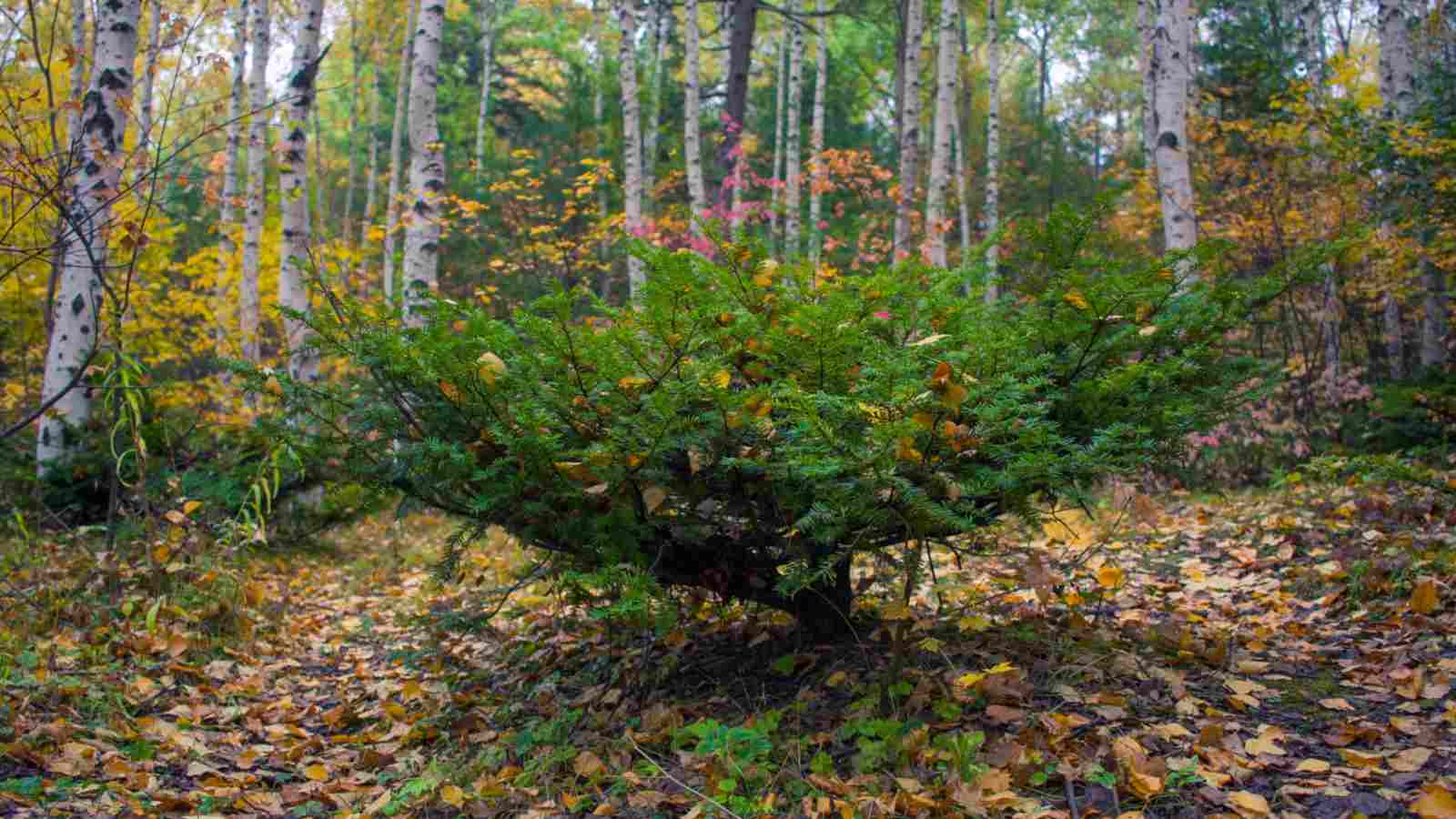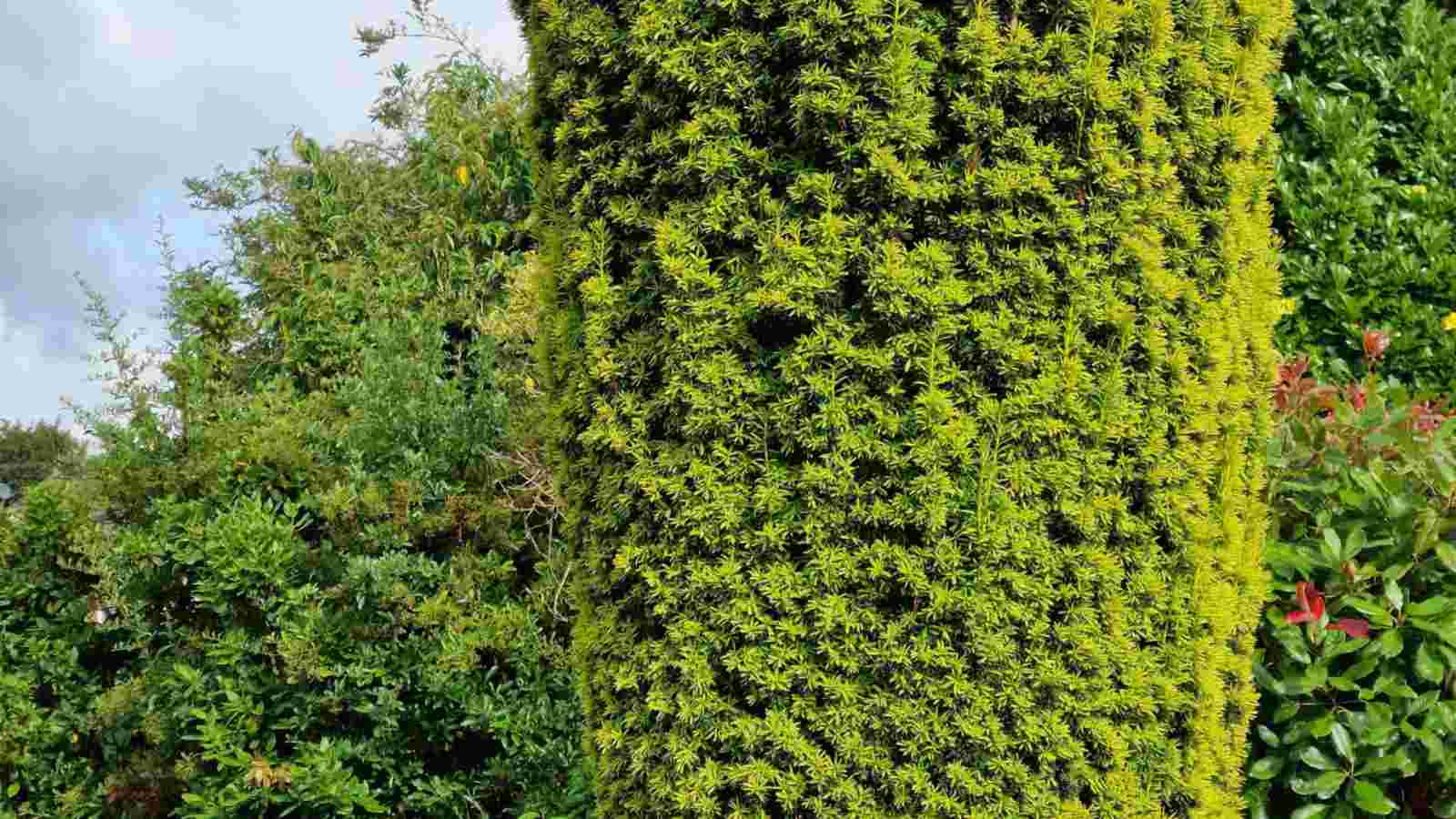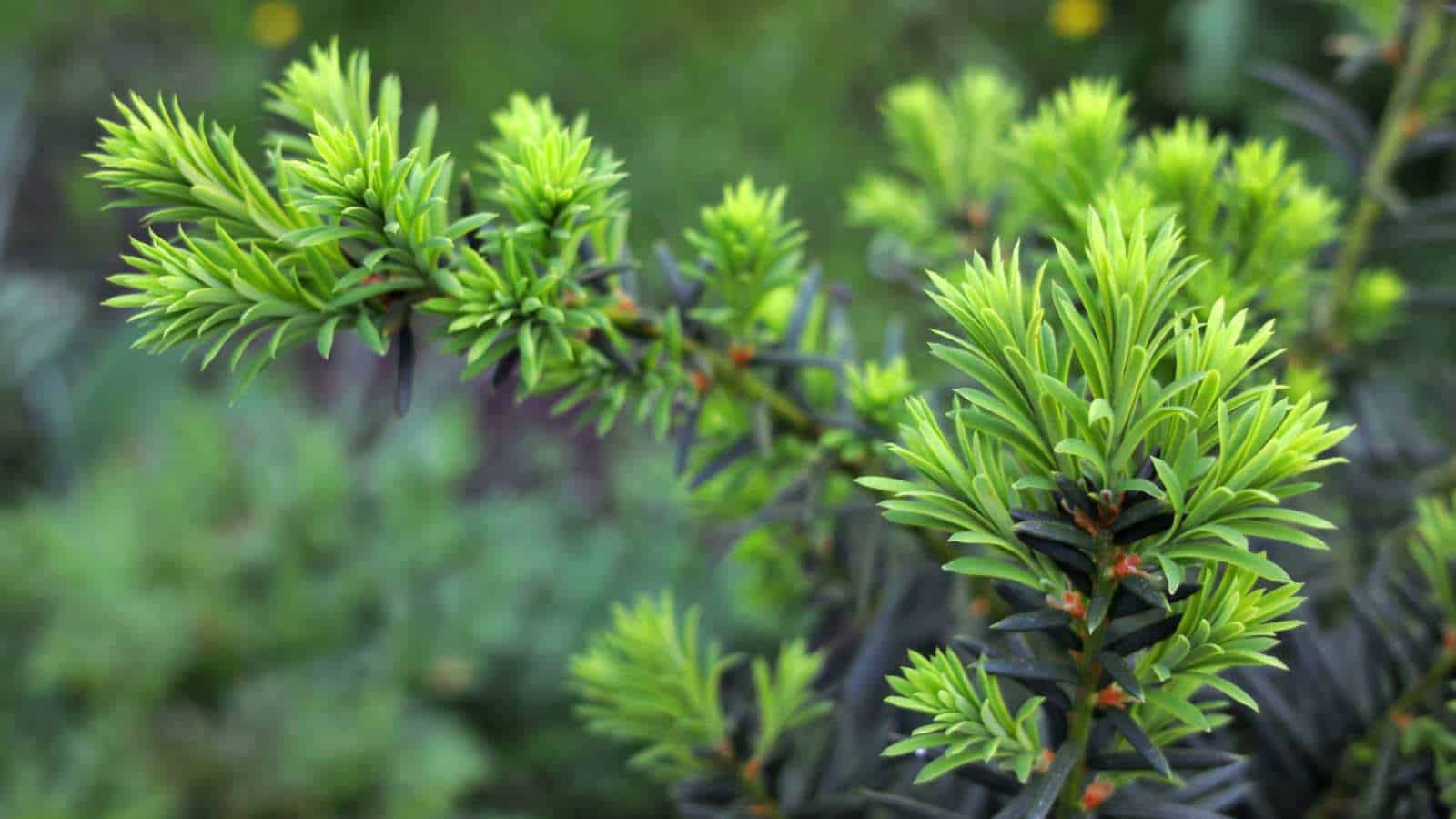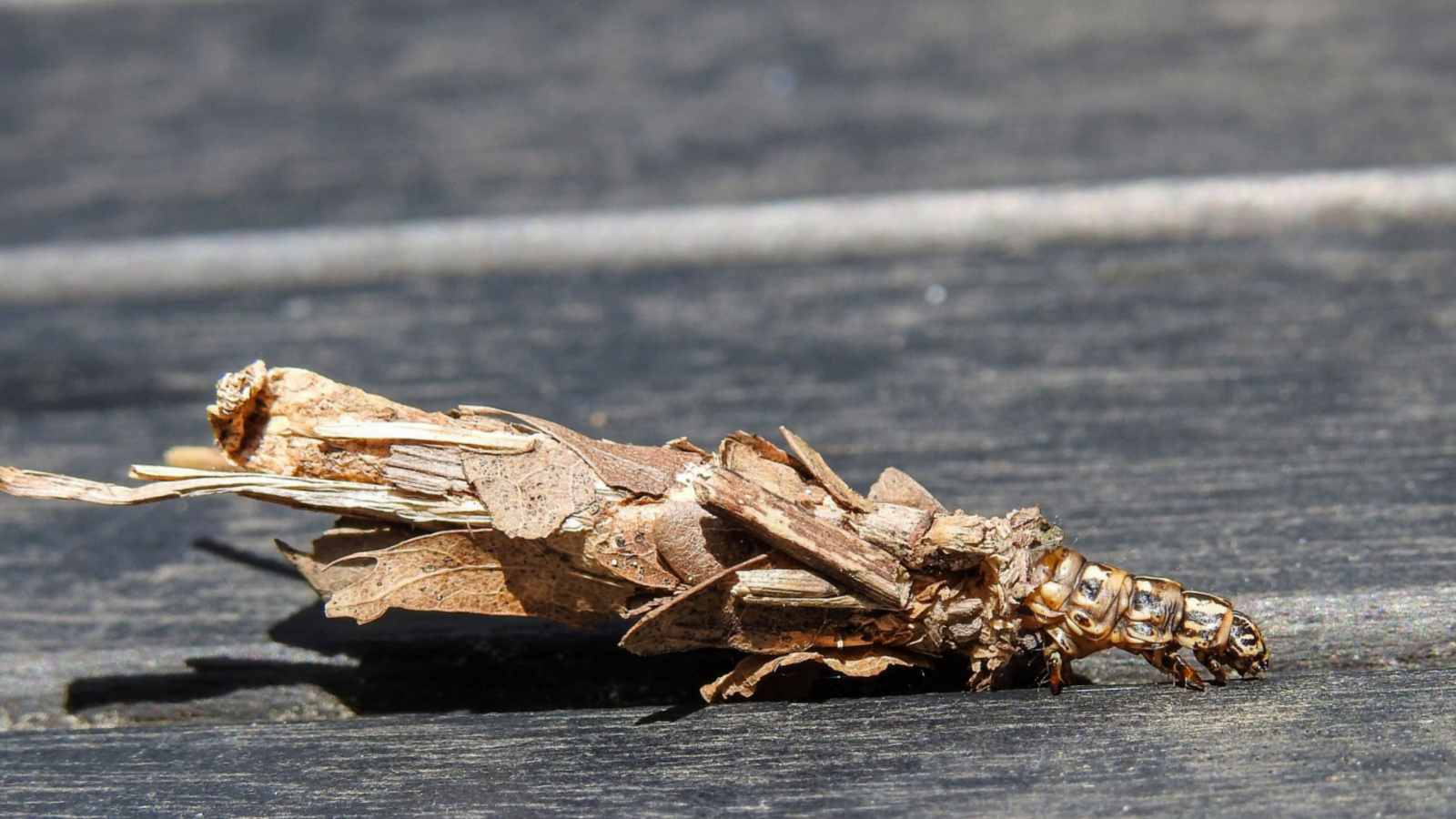Imagine your yard adorned with the lush, evergreen beauty of Japanese Yew. These stunning shrubs have the power to transform your outdoor space into a landscape straight out of a fairy tale. In this step-by-step guide, we’re diving deep into the art of growing Japanese Yew, unraveling its secrets, and revealing how you can make your yard the envy of the neighborhood.
Japanese Yew, scientifically known as Taxus cuspidata, is a marvel of nature. These slow-growing evergreen shrubs boast needle-like leaves that radiate an enchanting deep green. Their graceful branches can be sculpted into a variety of shapes, making them versatile for landscaping. Japanese Yews are known for their resilience, thriving in a range of conditions from partial shade to full sun, and they’re remarkably low-maintenance once established.
As you embark on your Japanese Yew journey, you must acquaint yourself with the different types and where they hail from. You’ll encounter variations like the Japanese Yew (Taxus cuspidata), the English Yew (Taxus baccata), and the Canadian Yew (Taxus canadensis). Each has its unique characteristics and native regions. Japanese Yew, for instance, is indigenous to Japan, where it thrives in the cool, moist climate of the Asian forests.
Beyond their aesthetic appeal, Japanese Yews have a wealth of practical uses. Gardeners often employ them as hedges, topiaries, or standalone ornamental shrubs. The wood of the Japanese Yew has been used for centuries in traditional Japanese architecture and craftsmanship. These shrubs also hold cultural significance in Japan, symbolizing longevity and protection. Embracing the tradition of planting Japanese Yew in your yard can connect you to this rich cultural heritage.
As an experienced master gardener, my admiration for Japanese Yew has grown over many decades of study and cultivation. I’ll share my knowledge about these remarkable evergreen shrubs in this guide. From their unique characteristics to essential care tips, I’m here to help you successfully grow and enjoy Japanese Yew in your yard.

Botanical Name: Taxus cuspidata
Common Name: Japanese Yew
Family: Taxaceae
Plant Type: Evergreen shrub or tree
Hardiness Zones: 4-7 (USDA)
Sun Exposure: Partial to full shade
Soil Type: Well-drained soil
Soil pH: Slightly acidic to neutral
Maturity: Slow-growing
Height: Typically 6 to 20 feet, but can reach up to 50 feet in its natural habitat
Spacing: 4 to 8 feet apart
Fruit, cone, nut, and seed: Fleshy red fruit (arils) resemble berries that ripen in August-November.
Native Area: Japan, Korea, China
Japanese Yew Care
Caring for Japanese Yew, Taxus cuspidata, is a rewarding endeavor, as these evergreen shrubs can thrive with a bit of attention and care. To ensure your Japanese Yew remains healthy and vibrant, it’s essential to understand its specific needs.
Japanese Yew prefers partial to full shade, making it an excellent choice for areas in your yard with limited sunlight. When it comes to soil, well-draining soil is crucial. Ensure the soil is not waterlogged; these plants don’t tolerate excessive moisture well. Additionally, maintaining slightly acidic to neutral soil with good drainage will promote healthy growth.
Proper watering is key to the well-being of your Japanese Yew. During the first year after planting, keeping the soil consistently moist but not waterlogged is essential. Once established, these shrubs are relatively drought-tolerant, but regular watering during dry spells is recommended.

Japanese Yew is amenable to pruning and shaping, allowing you to create various forms, from hedges to topiaries. Pruning is typically done in late winter or early spring before new growth begins. This practice not only maintains the desired shape but also encourages dense foliage.
While Japanese Yew is generally low-maintenance, occasional fertilization can boost its health and appearance. Apply a balanced, slow-release fertilizer in the early spring to provide essential nutrients.
These shrubs are relatively pest-resistant, but watching for issues like scale insects is essential. Regular inspections and prompt action if you notice any problems will help maintain their vigor. Proper care and maintenance practices, such as avoiding overwatering, can prevent common issues.
Light
These evergreen shrubs are adaptable to sunlight, making them a versatile choice for various garden settings. While they thrive in partial to full shade, they can also tolerate some sun exposure.
For optimal growth and lush foliage, it’s advisable to plant Japanese Yew in a location that receives at least a few hours of direct sunlight daily. This exposure enhances their overall vigor and appearance. However, they are quite forgiving and can flourish in shadier spots, making them suitable for landscaping in areas with limited sun.
Striking a balance between sunlight and shade is key to Japanese Yew’s health and beauty. It’s worth noting that in exceptionally sunny and hot climates, providing some afternoon shade can help protect them from scorching, ensuring they maintain their lush, vibrant greenery.

In addition to aiding their growth, the right amount of sunlight can also play a role in preventing common issues like pests and diseases. Proper sun exposure helps to keep the foliage dry, reducing the risk of certain fungal diseases. Overall, understanding the light requirements of Japanese Yew will contribute to their resilience and longevity in your garden.
Soil
Japanese Yew performs best in well-draining soil that balances retaining adequate moisture and preventing waterlogged conditions. This balance ensures that the plant’s roots remain healthy and hydrated without becoming saturated.
Maintaining a slightly acidic to neutral soil pH is ideal for Japanese Yew. This pH range promotes nutrient uptake and overall plant health, helping your shrubs thrive. If needed, soil amendments can be introduced to achieve the desired pH levels.
To enhance the fertility of the soil and provide essential nutrients, it’s advisable to enrich the planting area with organic matter. Incorporating compost or well-rotted manure into the ground can significantly improve its quality and ensure that your Japanese Yew has access to the nutrients it requires for robust growth.

Water
Proper watering is a vital aspect of Japanese Yew care, ensuring the health and vigor of these evergreen shrubs. Understanding their water requirements is essential to their well-being.
Japanese Yew thrives in well-drained soil that maintains consistent moisture levels. However, it’s crucial to strike a balance and avoid overwatering, which can lead to issues like root rot and other diseases. During drought or dry spells, supplementary watering is essential to keep the soil evenly moist.
In contrast, during cooler months, when the demand for moisture decreases, you can reduce the frequency of watering. Japanese Yew demonstrates impressive resilience, but regular and sufficient watering remains essential to achieve optimal growth and appearance.
To aid in moisture retention and root protection, consider mulching around the base of your Japanese Yew. Mulch helps maintain soil moisture and prevents moisture loss due to evaporation, contributing to the overall well-being of these elegant evergreen shrubs.
Temperature and Humidity
Japanese Yew exhibits remarkable adaptability to a range of temperature zones, making it an excellent choice for various climates. These evergreen shrubs thrive in a variety of conditions, from full sun to partial shade. They are typically hardy in Zones 4 to 7 but can also tolerate Zones 8 and above with proper care.
Timing plays a significant role in the care of Japanese Yew. Spring is the prime season for these shrubs, when they put on a display of vibrant greenery. While they are relatively adaptable to humidity levels, consistent moisture is essential for their health. During dry spells or droughts, it’s crucial to provide sufficient watering to maintain the delicate moisture balance that Japanese Yew requires to thrive.
To safeguard your Japanese Yew against severe temperatures, it’s advisable to apply a layer of mulch around the base of the shrub. This mulch helps retain moisture and offers insulation against extreme cold or heat, ensuring the plant’s resilience and overall well-being. Understanding the temperature and humidity requirements of Japanese Yew will contribute to its vigor and longevity in your garden.

Fertilizer
These versatile evergreen shrubs appreciate well-drained soil enriched with organic matter. Applying a balanced, slow-release fertilizer in the early spring is recommended, just as the plant prepares for new growth.
However, it’s crucial to exercise caution with fertilization. Over-fertilization can lead to various issues, including leaf spots, powdery mildew, and increased susceptibility to pests like aphids and caterpillars. Therefore, it’s best to apply fertilizer in moderation and avoid excessive use, as Japanese Yew generally thrives when provided with just the right amount of nutrients. Understanding these fertilizer requirements will contribute to the health and vitality of your Japanese Yew.
Pruning
Unlike some other plants, Japanese Yew generally demands minimal pruning, especially during its early years.
The best time to prune Japanese Yew is typically in late winter or early spring before new growth begins. This timing ensures that any necessary shaping or maintenance doesn’t interfere with the shrub’s development and doesn’t inadvertently remove buds that would develop into new foliage.

It’s essential to exercise caution when pruning, as excessive trimming, can stress the plant and potentially make it more susceptible to diseases or pests. When you do prune, aim for selective and strategic cuts to maintain the desired shape and density of the shrub.
After pruning, always thoroughly clean up to prevent the spread of any fungal spores or potential infections.
Overwintering
Overwintering is a crucial aspect of Japanese Yew care, as it helps ensure the health and vitality of these evergreen shrubs during the colder months. While Japanese Yew is generally hardy, taking a few precautions can go a long way in preserving their well-being.
One essential practice is to apply a layer of mulch around the base of the Japanese Yew. This layer serves multiple purposes—it provides extra insulation and warmth to the root system, helping the plant withstand colder temperatures. Additionally, mulch aids in moisture retention, preventing the soil from drying out during winter.
Types of Japanese Yew
Japanese Yew, Taxus cuspidata, comes in various cultivars, each offering distinct characteristics and aesthetic appeal. Let’s explore some of the noteworthy cultivars that you can consider for your garden or yard:
-
‘Capitata’
The ‘Capitata’ cultivar of Japanese Yew is known for its upright, columnar growth habit. It forms a stately, slender shape, making it an excellent choice for vertical accents in your landscape. Its dense foliage consists of dark green needles, adding a touch of elegance to any garden.
-
‘Nana’

If you’re seeking a more compact and low-maintenance option, ‘Nana’ is an ideal choice. This dwarf cultivar maintains a rounded, compact shape and grows slowly. Its dark green foliage provides year-round interest, making it suitable for small gardens or as a foundation plant.
-
‘Densa’

‘Densa’ is prized for its dense, bushy growth and tidy appearance. This cultivar forms a neat, mounded shape and features dark green foliage. ‘Densa’ is an excellent option for hedges or border plantings, as it responds well to pruning and shaping.
-
‘Aurescens’
For a pop of color in your landscape, consider the ‘Aurescens’ cultivar. It stands out with bright golden-yellow new growth that matures to a rich green. This cultivar adds a vibrant contrast to the garden and can be used as an eye-catching focal point or in mixed shrub borders.
-
‘Fastigiata’
The ‘Fastigiata’ cultivar is celebrated for its narrow, columnar form. It exhibits dense, dark green foliage and is often chosen for its formal appearance. ‘Fastigiata’ works well as a specimen plant or when planted in rows to create a formal hedge or screen.
-
‘Expansa’
The ‘Expansa’ cultivar of Japanese Yew is valued for its low, spreading growth habit. It forms a dense, ground-hugging mat, making it an excellent choice for ground cover or as a cascading element in your landscape design. ‘Expansa’ features dark green foliage, which remains attractive throughout the year and provides an elegant backdrop for other plants.
How to Plant Japanese Yew From Seed
If you’ve ever been captivated by the beauty of Japanese Yew and dreamt of growing them from scratch, you’re in for an exciting journey. Planting Japanese Yew from seeds can be a rewarding experience, allowing you to watch these elegant shrubs flourish from the beginning. Here, we’ll walk you through the step-by-step process to get started.
Step 1: Preparing the Seed
Begin your Japanese Yew planting adventure by obtaining seeds. These seeds can typically be collected from mature Japanese Yew cones. Once you have the seeds, preparing them for planting is essential. Start by soaking the seeds in warm water for 24 hours. This helps break their dormancy and encourages germination. After soaking, carefully remove any remaining flesh from the seeds and allow them to air dry.

Step 2: Planting the Seed
Select a well-draining potting mix for your Japanese Yew seeds. Fill seed trays or small pots with this mix, and then gently press the prepared seeds into the soil, ensuring they are not buried too deep. A light covering of soil is sufficient. Water the trays or pots thoroughly, and cover them with plastic wrap or a transparent lid to create a greenhouse effect. This helps maintain moisture and warmth, both of which are essential for germination.
Step 3: Providing the Right Conditions
When nurturing your Japanese Yew seeds, providing the right conditions is crucial. Place the trays or pots in a bright, indirect light location, maintaining a temperature of around 70-75°F (21-24°C). Keep the soil consistently moist but not waterlogged. Seedlings should begin to emerge in several weeks. Once they have developed a few true leaves, they can be transplanted into individual pots with well-draining soil.

Step 4: Addressing Common Pests and Problems
As your Japanese Yew seedlings grow, watch for common pests like aphids, mealybugs, or scale insects. If you notice any issues, promptly address them with appropriate measures like neem oil or insecticidal soap. Additionally, ensure your young seedlings are protected from extreme temperature fluctuations and strong winds, as they can be sensitive in their early stages.
Planting Japanese Yew from seed is a patient but highly rewarding endeavor. With the proper care and attention, you can raise these elegant evergreen shrubs from infancy to maturity, adding timeless beauty to your garden. So, grab your seeds and embark on your Japanese Yew growing journey—you’ll be amazed at the results!
How to Propagate Japanese Yew
When it comes to growing Japanese Yew, starting from seeds can be a lengthy and uncertain process, often taking several years to establish, if successful at all. Therefore, a more reliable approach is to propagate Japanese Yew from stem cuttings or acquire young, established plants from your local nursery or gardening center. Here’s a brief overview of how to successfully propagate Japanese Yew from cuttings:
Selecting a Proper Specimen
The first step in propagating Japanese Yew is selecting a healthy and mature specimen. Look for a well-established plant with vibrant foliage and a sturdy structure. Healthy branches with no signs of disease or damage are ideal for propagation. Ensure that you have permission to take cuttings from the plant, especially if it’s not in your own garden.
Cutting Preparation
Once you’ve chosen a suitable specimen, it’s time to prepare the cuttings. Select young, flexible branches for your cuttings. These are more likely to root successfully. Using clean, sharp pruning shears, take 4-6 inch cuttings, ensuring each cutting has several pairs of healthy needles. Remove any needles from the lower third of the cutting, as this is where the roots will form.

Rooting
Rooting Japanese Yew cuttings can be done in water or directly in potting soil. To root in water, place the cuttings in a container with enough water to submerge the nodes where the needles were removed. Change the water every few days. For soil rooting, plant the cuttings in a well-draining potting mix, ensuring the nodes are below the soil’s surface. Keep the soil consistently moist but not waterlogged. Roots should begin to develop in a few weeks.
Care and Maintenance
Once the cuttings have rooted and are showing new growth, it’s time to transplant them into individual pots or into your garden. Choose a suitable location with well-draining soil and partial to full shade. Water the newly transplanted cuttings regularly and provide protection from harsh sunlight and strong winds until they are well-established.
Monitoring for Pests and Diseases
As your propagated Japanese Yew plants grow, keep a close watch for common pests like aphids and potential diseases like root rot. Early detection and prompt action are crucial to maintaining the health of your new plants. Regular inspections and appropriate treatments, such as neem oil for pests or adjusting watering practices for diseases, can help ensure the success of your propagated Japanese Yew.
Propagating Japanese Yew can be a satisfying and cost-effective way to expand your garden or share these beautiful shrubs with others. With attention to detail and proper care, you can create new generations of Japanese Yew plants that will continue to grace your lawn with their timeless elegance.
Common Uses of Japanese Yew
Japanese Yew, with its graceful beauty and versatility, finds a multitude of uses that go beyond just ornamental gardening. Let’s explore the diverse ways in which Japanese Yew adds value to our lives.
Ornamental Landscaping
Japanese Yew is renowned for its striking appearance, making it a popular choice in ornamental landscaping. Its dense, dark-green foliage, which retains its color year-round, adds a touch of elegance to gardens, parks, lawns, and even urban landscapes and is often used as accent plants. These small trees can be pruned into various shapes, making them ideal for hedges, topiaries, or as a standalone specimen plant.
Privacy Screens and Hedges
Due to its dense growth habit and evergreen foliage, Japanese Yew is often used to create foundation plantings, privacy screens, and hedges. These shrubs, when planted closely together, form a lush, green barrier that provides privacy and serves as an effective windbreak.

Medicinal Uses
In traditional herbal medicine, certain parts of the Japanese Yew have been used cautiously for their potential medicinal properties. The bark and needles contain compounds with anti-inflammatory and analgesic effects, although their use should only be undertaken by experts due to the toxicity of some components.
Woodworking and Craftsmanship
The wood of the Japanese Yew has been used for crafting various items, including small furniture pieces, carving, and woodworking. Its fine grain and pale color make it an attractive choice for creating intricate carvings and detailed inlays.
Wildlife Habitat
Japanese Yew provides valuable wildlife habitat. Birds are known to seek shelter and build nests among their branches, and the shrub’s berries serve as a food source for various bird species. The dense foliage also offers protection to smaller wildlife.
Cultural Significance
In Japanese culture, the Japanese Yew (known as “Sotetsu”) holds cultural and historical importance. It has been featured in art, poetry, and religious ceremonies. In addition, its wood was traditionally used in the construction of shrines and temples.
Bonsai Cultivation

Japanese Yew is a popular choice for bonsai enthusiasts. Its evergreen nature and tolerance for pruning make it well-suited for bonsai cultivation. Bonsai artists often craft intricate miniature landscapes with Japanese Yew as a central element.
Common Pests and Plant Diseases for Japanese Yew
-
Scale Insects (Hemiptera: Diaspididae)

Scale insects are a known menace for Japanese Yew. These tiny, immobile pests attach themselves to the foliage and feed on plant sap, often leaving waxy bumps on leaves and stems. To combat scale insects, consider applying neem oil or horticultural oil during the dormant season. Pruning and disposing of heavily infested branches can also help reduce their population.
-
Root Rot (Phytophthora spp.)
Root rot can rear its ugly head when Japanese Yew is exposed to excessively wet or poorly drained soil. This fungal disease takes a toll on the roots, leading to symptoms like yellowing foliage and wilting. To prevent root rot, ensure well-draining soil and avoid overwatering. If you suspect root rot, remove affected plants promptly and consider improving soil drainage for future plantings.
-
Twig Blight (Phomopsis spp.)
Twig blight can wreak havoc by causing dieback in Japanese Yew, resulting in the browning and death of branches. It often manifests through cankers on stems and the presence of black fungal spore structures. To manage twig blight, prune affected branches well below the infected area. Adequate air circulation and avoidance of overhead watering can help reduce humidity, a condition favorable to the disease.
-
Spider Mites (Tetranychidae):

Spider mites are frequent culprits, leaving their mark with stippled leaves and fine webbing on Japanese Yew. To combat these pests, a regular spray of water to dislodge them and the introduction of natural predators like ladybugs can be effective. In cases of severe infestation, consider the use of insecticidal soap or neem oil.
-
Bagworms (Lepidoptera: Psychidae)

Bagworms are caterpillars that construct protective bags around themselves using plant material. They have a voracious appetite for Japanese Yew foliage, resulting in defoliation. Control methods include handpicking and destroying bagworms or employing biological insecticides.
-
Weevils (Curculionidae):

Weevils can be a concern for Japanese Yew. These beetles can cause damage by feeding on foliage and creating irregular notches along the leaf edges. To manage weevils, you can use insecticidal sprays, but it’s essential to follow product instructions carefully and apply them when the pests are active.
Common Plant Problems and Solutions for Japanese Yew
-
Browning of Foliage
One common issue is the browning of foliage, which can occur due to factors like drought stress, harsh sunlight, or winter burn. To combat this, ensure your Japanese Yew receives adequate moisture, provide some shade during hot summer afternoons, and protect it from harsh winter winds. Pruning away any dead or damaged foliage will encourage new growth.
-
Yellowing Leaves
Another concern is the yellowing of leaves, often caused by nutrient deficiencies or compacted soil. Conduct a soil test to identify nutrient deficiencies and amend the soil accordingly. Proper soil aeration is essential to prevent compaction, and regular mulching helps maintain soil moisture and nutrient levels.

-
Dieback of Branches
Dieback of branches, where they wither and die, can be due to fungal infections, poor air circulation, or overcrowding. To address this, prune affected branches back to healthy tissue and improve air circulation by spacing your Japanese Yew appropriately. Avoid overcrowding, which can lead to increased humidity and disease susceptibility.
-
Wilting and Drooping Foliage
Wilting and drooping foliage may result from water stress, root damage, or insufficient moisture. Ensure regular, deep watering, especially during dry spells, but be cautious not to overwater, as it can lead to root rot. Mulching around the base of the plant helps retain soil moisture. Inspect the roots for damage and take necessary measures, such as root pruning or transplantation, to address any issues.
-
Needle Yellowing
Needle yellowing on Japanese Yew may indicate stress from factors like inadequate sunlight or nutrient imbalances. Assess the plant’s location and provide it with sufficient sunlight and also address nutrient imbalances through proper fertilization based on soil test results. Consider using slow-release fertilizers to provide a steady nutrient supply.
-
Winter Burn
Lastly, another challenge your Japanese Yew may encounter is winter burn. This occurs when cold temperatures and dry winds dehydrate the foliage, resulting in brown or scorched leaves. To prevent winter burn, consider applying an anti-desiccant spray in late fall to reduce moisture loss. Providing windbreaks or burlap screens can also shield your shrubs from harsh winter winds. Additionally, ensuring the soil is adequately moist before winter sets in can help mitigate the effects of winter burn, keeping your Japanese Yew vibrant and healthy throughout the colder months.
Frequently Asked Questions
Is Japanese Yew poisonous?
Yes, Japanese Yew (Taxus cuspidata) is highly toxic to humans and animals due to the presence of taxine alkaloids in its leaves, bark, and seeds. Ingesting any part of the plant can lead to severe poisoning and, in some cases, even death. There have been recorded instances of deadly consumption of Japanese yew by elk, moose, deer, and pronghorn, particularly during the winter months. It is crucial to exercise caution and keep Japanese Yew out of reach of children and pets.
How much yew is poisonous to dogs?
Even small amounts of Japanese Yew can be toxic to dogs. Ingesting a few leaves or berries can result in severe poisoning symptoms in dogs. It is imperative to seek immediate veterinary assistance if you suspect your dog has consumed any part of the Japanese Yew plant.
Are Japanese Yew berries edible?
No, Japanese Yew berries are not edible for humans or animals. They contain toxic compounds, including taxine alkaloids, which can be deadly if ingested. Consumption of these berries should be avoided at all costs.
Is Japanese yew invasive?
Japanese Yew (Taxus cuspidata) is not typically considered invasive in most regions. However, it is essential to check with local authorities and horticultural experts to determine its status in your specific area. While it may not be invasive, it is crucial to be aware of its potential toxicity and proper care requirements.
Can Japanese yews survive a freeze?
Japanese Yews are generally hardy shrubs that can tolerate cold temperatures and winter freezes, especially when they are well-established. However, young or recently planted Japanese Yews may be more susceptible to frost damage. Proper winter care, such as mulching and wind protection, can help them survive freezes and maintain their health.
Other Tree Guides from Planet Natural:











